- Home
- Martin Amis
The War Against Cliche: Essays and Reviews 1971-2000 (Vintage International) Page 2
The War Against Cliche: Essays and Reviews 1971-2000 (Vintage International) Read online
Page 2
Iron John, a short work of psychological, literary and anthropological speculation by the poet Robert Bly, ‘dominated’ the New York Times bestseller list for nearly a year, and has made, as we shall see, a heavy impact on many aspects of American life. It has not done so well over here. For this there are many reasons, but let us begin with the most trivial. Iron John runs into trouble – into outright catastrophe – with the first word of its title. I don’t know why I find this quite so funny (what’s wrong with me?); I don’t know why I still scream with laughter every time I think about it. Is it the spectacle of Bly’s immediate self-defeat? Or is it because the title itself so firmly establishes the cultural impossibility of taking Iron John straight? Anyway, here’s the difficulty: in England iron (iron hoof) means ‘poof – just as ginger (ginger beer) means ‘queer’, and oily (oily rag) means ‘fag’. Iron means ‘poor.
At my local sports club in Paddington, where I do most of my male bonding, there is much talk about irons. Not long ago I joined in a conversation whose notional aim was to select an iron football team. The mood was earnest rather than hostile, and we didn’t get very far with this particular team sheet. ‘Chairman: Elton John. Elton is an iron, isn’t he?’ Centre-forward: Justin Fashanu. He’s an iron. He came clean about it in the Sun.’ So I can easily conjure the fickle leers that would await me if, one morning, I walked into the club saying: ‘Well, guys – there’s a new book about men and masculinity that’s going to straighten out all the problems we’ve been having with our male identity. It says we should spend much more time together and exult in our hairiness and sliminess and zaniness. It says we should leave the women at home and go camping and take all our clothes off and rough-house in the woods. It says we should hang out more with older men. It’s called Iron John.’
Naturally, it’s much too easy to laugh at Robert Bly’s vision. But why is it so easy? Partly because he is one of those writers, like F.R. Leavis and Hermann Hesse, whose impregnable humourlessness will always prompt a (humorous) counter-commentary in the reader’s mind. Then, too, we are British, over here; we are sceptical, ironical, etc., and are not given, as Americans are, to seeking expert advice on basic matters, especially such matters as our manhood. But the main reason has to do with embarrassment. Being more or less unembarrassable, Americans are fatally attracted to the embarrassing: they have an anti-talent for it (the Oscars, the primaries, the hearings, the trials, Shirley Temple, Clarence Thomas, Andrea Dworkin, Al Sharpton, Ronald Reagan, Jimmy Swaggart). Whereas, over here, maleness itself has become an embarrassment. Male consciousness, male pride, male rage – we don’t want to hear about it.
This of course is the very diffidence and inhibition that Bly wants to goad us out of. His exemplar is the old tale of Iron John, which ‘could be ten or twenty thousand years old’, or could be ‘pre-Christian by a thousand years or so’, but which is, at any rate, old. Let us quickly do Iron John, or its first and more interesting half, and without any of the twinkly demotic (‘okay’, ‘there’s no problem’, ‘yuck!’) that Bly uses to keep his modern audience reassured. The King’s hunters start vanishing in the forest. One day a man appears, and offers to investigate. He goes out there accompanied by his dog, which gets tugged into a pond by a naked arm. The pond is bucketed out. At the bottom lies a Wild Man. The King has him locked up in a cage in the courtyard. One day the King’s eight-year-old son drops his best toy – a golden ball – into the cage of the Wild Man. A trade is arranged: the golden ball for the Wild Man’s freedom. The boy agrees to open the cage – but he can’t find the key. The Wild Man tells him that the key is to be found beneath his mother’s pillow. The boy does as he is told but is worried about punishment. So the Wild Man hoists him on to his shoulders, and off to the forest they go.
The story trundles on from here – the golden spring, the trial, the descent into the world, horses, battles, ending with the usual stuff involving glory/princess/kingdom/treasure – and Bly trundles on alongside it, increasingly drunk on panoptic explication. Late in the book, encountering some conventional guff about the boy’s white horse, Bly has us know that white stands for ‘semen, saliva, water, milk, lakes, rivers … the sea, and priesthood … health, strength and all good things … fellowship and good company … the purity of children and brides … persons with high moral purposes … purification … [and] a sort of abstract, ideal state’. That’s what white stands for. Bly takes the tale, in any event, as an allegory of male maturation.
Iron John, the Wild Man, smothered in his ginger hair, is the ‘deep male’, the embodiment and awakener of, variously, ‘Zeus energy’, ‘divine energy’, ‘hurricane energy’, ‘masculine grandeur’ and ‘sun-like integrity’, brandishing ‘the Varja sword’ of sexuality, courage and resolve, and championing ‘the moist, the swampish, the wild, the untamed’. Iron John is hard to find and awkward to contain and dangerous to release; but his mentorship brings huge rewards (all his treasure). The story’s single beauty – the location of the key to the cage – is also its crux, for the boy must put aside womanly things in his journey from ‘soft’ male to ‘hard’. The rest of his development (learning to shudder, tasting ashes, warriorhood) comes over as a cross between adolescent fantasy and middle-aged encounter-group sessions, with many a crackup and primal scream. The forest is an arcadia splattered with mud and blood.
What emerges? Feminist writers have done their job on Iron John, and intelligibly. It hardly needs to be pointed out that Bly is phallocentric to the ends of his hair, and rollickingly tendentious even in his imagery:
The King’ and ‘the Queen’ send energy down. They resemble the sun and the moon that pierce down through the earth’s atmosphere. Even on cloudy days something of their radiant energy comes through.
Yes, but the moon has no energy, and doesn’t radiate; the Queen merely reflects the heavenly power of the King. Not that Bly is at all forgetful of women’s interests. He wants to establish, or re-establish, a world where men are so great that women like being lorded over:
We know that for hundreds of thousands of years men have admired each other, and been admired by women, in particular for their activity. Men and women alike once called on men to pierce the dangerous places, carry handfuls of courage to the waterfalls, dust the tails of the wild boars.
After a few hours of that kind of talk, the women will get their reward – in the bedroom:
Sometimes in a love affair, the lovers make love with the Wild Man – and Wild Woman – right in the room; and if we are those lovers, we may feel certain body cells turn gold that we thought were made entirely of lead.
So there will be that: Wild Sex. Bly knows about women’s ascensionism, but he thinks ‘it is appropriate for women to describe it’. ‘We will confine ourselves here to men’s ascensionism.’ The dialogue had better start soon, before the yodelling gets any louder.
Bly is a poet. He is a big cat, so to speak, and not some chipmunk or beaver from the how- to industry. Then again, maybe Bly is more like a stag or a peacock, contentedly absorbed in the ‘display’ rituals he so admires. To pick up a book like The Way Men Think: Intellect, Intimacy and the Erotic Imagination, a sober, chatty, palliative study of gender differences, is to be transported into another – dramatically blander – world; but it is the civilized world, the modern world, the real world. Bly’s utopia is as remote in time as the story of Iron John, and can be recreated, now, only as a Rockwellian fantasy – the gruff dads, with their tools and their guileless dungarees. At the end of Lady Chatterley’s Lover Mellors tells Connie that everything would be all right if men sang and danced every evening, dressed in tight red trousers. Bly, who likes his Lawrence, can think of nothing to do about the modern landscape except turn away from it. Iron John finally settles on the mind as a tangled mop of vivid and cumbrous nostalgies.
Turning to a quite elderly copy of the Utne Reader (a monthly digest of America’s ‘alternative press’ – always informative, always revealing), we are confronted by an astonis
hing and unchallengeable fact: Iron John has transformed male consciousness in the United States. There can be no argument. It has already happened. The Wild Man Weekends and Initiation Adventure Holidays and whatnot, which are now big business, may prove ephemeral. But what does one make of the unabashed references to ‘men’s liberation’ and ‘the men’s movement’, and the fact that there are now at least half a dozen magazines devoted to nothing else (Changing Men, Journeymen, Man!). Men, the male argument goes, are ‘oppressed’, coming out second best on longevity, suicide rates, drug use, homelessness and work hours. The political platform being nailed together includes the Federal encouragement of boys’ clubs and scout troops, male-only early-grade classes taught by men, right down to such things as male-friendly tax breaks for home-based employment. Now that men are just another minority, the way forward, or the way back, lies with ‘eco-masculinity’, an emphasis on husbandry which will ‘affirm the “seedbearing”, creative capacity of the male’. Actually, part of me always did suspect that there was something in it – in Blyism; and now I suppose I’ll eventually have to act on that dawning conviction. When my boys reach a certain age, and the time comes to establish a distance from their mother and introduce them to the rugged lineaments of the male world, then I’ll probably take them to the Hilton for at least a night or two.
It is relevant, I think, to ask what Iron John is like as a husband and father. How tight a ship does Captain Bly run? There he is on the back cover, assuming the stance of a man warming the backs of his legs over a log fire, with wispy white hair, with specs, tapestry waistcoat, crimson cravat, and tight, dutiful, chinny smile. He doesn’t look like a man of iron, but there’s definitely something steely about him. He is unironical about himself, and naively vain (Iron John features a book-length running joke on authorial pretension, in which quoted gobbets from such poets as Rilke, Antonio Machado, the Norwegian Rolph Jacobsen, and many others, including Dante, are all ‘translated by R. B.’). Mr Bly wants respect; he has plenty of bristles and prickles; like Bronco toilet-paper, he takes no shit from anyone. He is, in fact, that familiar being, the ‘strong personality’. This kind of strength is innate and not acquired, and is always looking for ways to expand. ‘Zeus energy is male authority accepted for the sake of the community.’ It sounds like a marvellously elemental excuse for getting away with everything. Zeus energy, ‘hurricane energy’: here is something that sweeps all before it. Would you want to tell Zeus to take out the garbage? Would you want to ask a hurricane to wipe its feet on the mat?
Feminists have often claimed a moral equivalence for sexual and racial prejudice. There are certain affinities; and one or two of these affinities are mildly, and paradoxically, encouraging. Sexism is like racism: we all feel such impulses. Our parents feel them more strongly than we feel them. Our children, we hope, will feel them less strongly than we feel them. People don’t change or improve much, but they do evolve. It is very slow. Feminism (endlessly diverging, towards the stolidly Benthamite, towards the ungraspably rarefied), the New Man, emotional bisexuality, the Old Man, Iron Johnism, male crisis-centres – these are convulsions, some of them necessary, some of them not so necessary, along the way, intensified by the contemporary search for role and guise and form.*
London Review of Books December 1991
* This piece became part of a lecture I gave at two American universities in the mid-1990s. At St Louis, Missouri, I feared that Robert Bly’s daughter (who is on the faculty) might be in the audience. She wasn’t there. Robert Bly’s daughter wasn’t there at Harvard, either. But Robert Bly was. At the close of the talk I invited his rebuttal. Standing tall, Bly asked me why I was so frightened of male grandeur. I wanted to say, ‘Because it’s so frightening’; instead I shrugged and mumbled, feeling I had already answered his question.
I Am in Blood Stepp’d in So Far
Hollywood vs. America by Michael Medved
In the cinema, if not elsewhere, violence started getting violent in 1966. The films that marked the escalation, in my memory, were Arthur Penn’s Bonnie and Clyde (1967) and Sam Peckinpah’s The Wild Bunch (1969). And I was delighted to see it, all this violence. I found it voluptuous, intense, and (even then) disquietingly humorous; it felt subversive and counter-cultural. Violence had arrived. There was also, I noticed, a sudden flowering of sex and swearing. The future looked bright.
Before then, violence wasn’t violent. People often talk, usually disapprovingly, about the way violence has become ‘stylized’ on film. But the old violence was stylized, too: it simply wore the soft gloves of much gentler conventions. Writing in the Fifties, Nabokov noted the ineffectuality of the ‘ox-stunning fisticuffs’ of an average cinematic rumble, and remarked on the speed with which the hero invariably recovered from ‘a plethora of pain that would have hospitalized a Hercules’. Few of us are in a position to say which style is the more life-like: the cartoonish invulnerability of the old violence or the cartoonish besplatterings of the new. We imagine that reality lies somewhere in between – that it is less dramatic, less balletic, and, above all, quicker. In life, the average fistfight, for instance, lasts about a second and consists of one blow. The loser gets a broken nose, the winner gets a broken hand, and they both trudge off to Emergency. Thus the great Stallone joins the queue at the trauma unit, while Chuck Norris fumbles with his first-aid kit. It just wouldn’t play.
What happens, now, if you drag out the old movies and look again at even their most violent violence? I gained my first solid apprehension of earthly mortality not from the death of a relative or a pet but from the death of Jim Bowie in The Alamo (1960). Richard Widmark’s skirling death cry haunts me still. I also remember my audible ‘Jesus’ when I saw Paul Newman smash his rifle butt into the raised glass of the saloon Okie, in Hombre (1967). And who can forget the various torments meted out to Marlon Brando in On the Waterfront (1954), One-Eyed Jacks (1961), and The Chase (1966)? (Brando, always well known for having his artistic ‘say’, definitely has a thing about getting beaten up.) Look again at such scenes and you marvel at your earlier susceptibility. They seem tame partly because they are tame (not dramatically but technically tame), and also because, in the interim, you have yawned and blinked your way through a thirty-year Passchendaele of slaughter. You have become, in other words, irreversibly desensitized. Macbeth – and let’s make that Polanski’s Macbeth – speaks for you when he says:
I am in blood
Stepp’d in so far, that, should I wade no more,
Returning were as tedious as go o’er.
In real life, interestingly, desensitization is precisely the quality that empowers the violent: empowers them to bear it away. In the moments leading up to violence, the nonviolent enter a world drenched with unfamiliar revulsions. The violent know this. Essentially they are taking you to where they feel at home. You are leaving your place and going over to their place.
Screen violence, we might notice, has close affinities with the weapons business, and, to borrow an ageing phrase from the nuclear-arms community, is often technology-led. Bullitt (1968) is justly remembered for its car chase, which, astonishingly, remains unsurpassed, despite bigger budgets, bigger engines, and the existence of furiously literal-minded actors willing to spend years of their lives bonding with racing drivers and crash dummies. But there was another standard-setting scene in Bullitt: the shotgun slaying of the underground witness, which entrains the incomprehensible plot. Suddenly, the door of the murky hotel room is kicked open; the police guard is caught in the thigh; the camera glances at this wound and then turns on the swarthy stoolie, who retreats with his hands raised, clambering up on to the foot of the low bed. As the gun is fired he is lifted off his feet and jerked through the air, smashing back-first into the wall in a nebula of blood. Soon after the film appeared, I happened to meet its director, Peter Yates, and when I asked him about this scene he took me through the mechanics of it – the blood pouch, the steel wires. In the old days, an actor who stopped a bullet would merel
y crush a ketchup sachet to the supposed entry-wound and look indignant. If he was a bad guy, he would roll to the floor and decorously close his eyes. If he was a good guy, he would get really mad, then later assure the gasping blonde at his side that the bullet hole was just a ‘scratch’ or, better, a ‘flesh wound’. Well, after 1968 there were no more scratches, no more flesh wounds. With the electronically ignited plasma-brimmed sandwich Baggie, the lurch cables and jolt harnesses, and so on, death by shotgun ceased to look like something you could quickly recover from.
In this context the recent Schindler’s List marks a progression, or maybe a retrogression. Here the point-blank pistol shot to the head results in a tubular spout of blood followed by a tragic curtsy to the ground almost as girlish and theatrical as Uma Thurman’s swoon in Dangerous Liaisons. One feels sure that this rendition was the result of close research, part of the carapace of verisimilitude that Spielberg needed to allow him artistic passage to the Holocaust. (Nearing the Holocaust, a trespasser finds that his imagination is decently absenting itself, and reaches for documentation and technique. The last thing he wants to do, once there, is make anything up.) In general, the escalation of violence in war films is not much questioned. Even the squeamish accept that a mechanized heartlessness forms the natural background – a civilian obedience, perhaps, to the hawkish axiom ‘What did you expect? This is war.’ We know more and more about the horror and pity of war, but we still seem to need persuading about the horror and pity of, for example, bank robbing, drug trafficking, serial murders, and chainsaw massacres.

 Other People
Other People The Zone of Interest
The Zone of Interest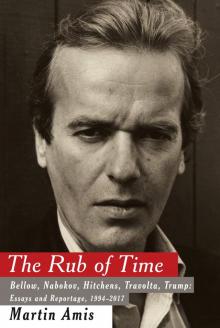 The Rub of Time: Bellow, Nabokov, Hitchens, Travolta, Trump
The Rub of Time: Bellow, Nabokov, Hitchens, Travolta, Trump Koba the Dread
Koba the Dread Success
Success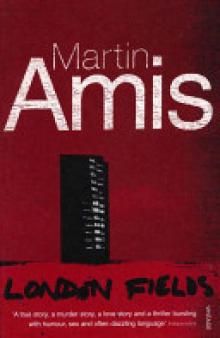 London Fields
London Fields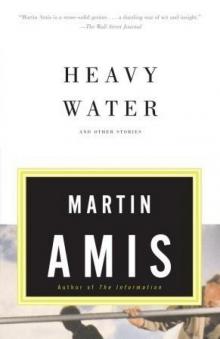 Heavy Water: And Other Stories
Heavy Water: And Other Stories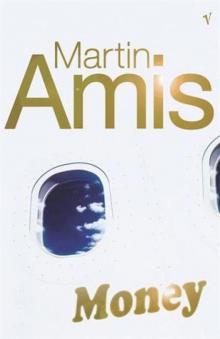 Money
Money The Moronic Inferno and Other Visits to America
The Moronic Inferno and Other Visits to America Yellow Dog
Yellow Dog Time's Arrow
Time's Arrow Experience: A Memoir
Experience: A Memoir Einstein's Monsters
Einstein's Monsters The Pregnant Widow
The Pregnant Widow House of Meetings
House of Meetings The Information
The Information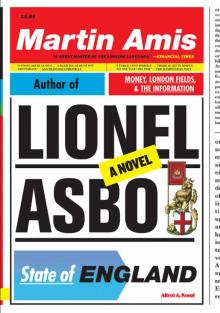 Lionel Asbo: State of England
Lionel Asbo: State of England Lionel Asbo
Lionel Asbo Heavy Water and Other Stories
Heavy Water and Other Stories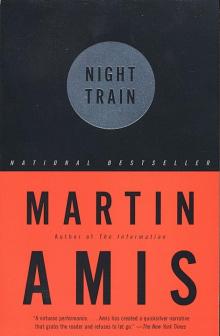 Night Train
Night Train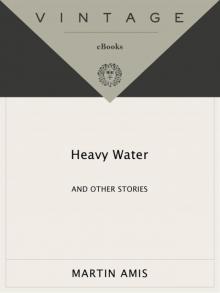 Heavy Water
Heavy Water The War Against Cliche: Essays and Reviews 1971-2000 (Vintage International)
The War Against Cliche: Essays and Reviews 1971-2000 (Vintage International)